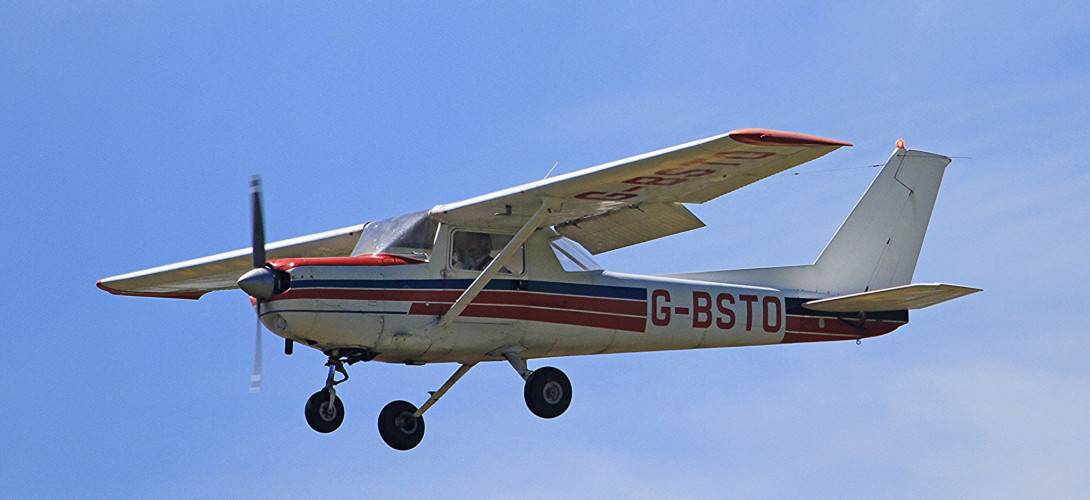Table Of Content

The Cessna 150 is a two-seat tricycle gear general aviation airplane that was designed for flight training, touring and personal use.[2] In 1977, it was succeeded in production by the Cessna 152, a minor modification to the original design. The Cessna 150 is an all metal, two seat, high wing, single engine airplane equipped with tricycle landing gear, having a steerable nose wheel and two main wheels. Later, these configurations were joined by the top-end Commuter II and the aerobatic Aerobat models. Operators who wish to fly the Cessna 150 as a STOL plane has modified their landing gear arrangement to a taildragger configuration, incorporating reinforced main struts and larger low-pressure wheels that make it fit for bush flying.
It's going to be a bumpy ride - AOPA
It's going to be a bumpy ride.
Posted: Sat, 01 Jul 2017 07:00:00 GMT [source]
Baggage capacity
Over the years, the 150 experienced a number of modifications, some dramatic. In 1961, the main gear struts were moved aft two inches to improve tail-heavy tendencies on the ground, and tubular gear legs with a wider track were added in 1971. The baggage area was enlarged several times, and by the end of production, the 150 had more space than load capacity.
Cessna 150: More Than the World’s Premiere Trainer
All performance figures are based on standard day, standard atmosphere, sea level, gross weight conditions unless otherwise noted. Troubles with Continental engine part supplies over the years have led some operators to replace the reliable O-200 with the equally capable but cheaper to service O-235 series by competitors Lycoming, a standard fit on the Cessna 152 series. Another common powerplant modification involves changing the propeller, with some options helping provide up to 125 hp instead of 100 hp.
Performance Specifications of the Cessna 1501, 2
New options were a map light under the control wheel and a ground power plug, and extra steps and handles were added to the floatplane version to make fueling easier.[23] 1714 "J" models were built,[1] plus 140 built by Reims as the F150J. In 1959, the ‘World’s Premier Trainer’ was introduced by Cessna as the Cessna 150. This small, but iconic, airplane has gone on to train over 250,0002 pilots- and counting. Its predecessor, the Cessna 140 tail-dragger, finished production in 1951, and Cessna went back to work designing an even better trainer and came up with the tricycle landing gear Cessna 150.
With a total of 33,000 units built, the 150 has remained a favorite among students, instructors, and joyriders, a testament to its timeless qualities. In 1976 the "M" gained a suite of electrical circuit breakers to replace the previous fuses used. It was also fitted with a fully articulated pilot seat as standard equipment (this seat had been optional on some earlier models). The 1973 "L" model brought in lower seats to provide more headroom for taller pilots.
Starting in 1959, the Cessna 150 Quickly Became One of the Most Popular Small Aircraft to Date
A common complaint that is not necessarily a Cessna 150 problem but is also present on it is the infamous Cessna seat track. The seats are unusually prone to sliding back due to defective or poorly designed seat locks and rails. While this issue may seem trivial, it has caused numerous crashes, leading to millions of dollars being paid in lawsuits. The crashes happen during take-off or landing when pilots get caught by surprise by their seat sliding and instinctively hold onto the first thing they can find – the yoke, most of the time. The elevator is actuated all the way back, which usually results in a stall with no time to recover at low altitudes and speeds. Careless ground handling has been found at fault for certain cracks in the horizontal stabilizer’s spar.
Question: How much does a Cessna 150 cost today?

Cessna tried to replace the Cessna 150 with the 162, but it did not work out in the long run for reasons outside the scope of this entry. A similar high wing offering is the Symphony SA-160, which enjoyed a short production run from 2001 to 2006. No Cessna 150 variant managed to top the Cessna 150’s nominal service ceiling, set to 15,300 ft. The Cessna 150H had that drastically decreased to 12,650 ft, but the definitive Cessna 150M brought that back up to 14,000 ft, respectably close to the original numbers. The 150L had the longest production run of any 150 sub-model, being produced 1971–74. Cessna has historically used model years like the U.S. automobile industry, with new models typically being introduced a few months prior to the actual calendar year.
The O-200 is relatively cheap to overhaul, and parts are readily available for it. Early 150s, like their 172 and 182 relatives, had the straight tail and fastback upper fuselage design, which some people think looks cool. Later models were slicked out with the swept tail (necessary for the near-supersonic cruise speed of close to 100 mph) and rear window. Because they’re so plentiful and offer such modest capability, the 150 is a terrific value. The yearly insurance rate for a Cessna 150 is one of the lowest you can get if you’re not using it as a trainer.
Cessna 150 – Similar Aircraft
The web portal flugzeuginfo.net includes a comprehensive civil and military aircraft encyclopedia. It provides code tables for aerodromes, air operators including the world's major airlines and for ICAO and IATA codes for aircraft. The website has also a photo gallery and gives you an overview of all aviation museums worldwide.
Throughout its production run from 1958 to 1977, the Cessna 150 went through sixteen variants, including two manufactured exclusively by the now-defunct French firm Reims Aviation. Owning in part to the aircraft meeting and in places exceeding its design targets, the changes between variants did not affect performance in a significant way. A total of 832 "K" models were built, including A150Ks.[1] Reims built 129 as the F150K and 81 as the FA150K. The 150D retained the straight tailfin and rudder of previous years. However, to lighten control loads, aerodynamic balance horns were added to the rudder and the elevator. These horns also contained weights (mass balances) to eliminate any possible control flutter that might be induced by the changed aerodynamics of the rear fuselage.
The 150 also featured larger, more powerful control surfaces, and a “more modern” squared-off profile3. The 150D model for 1964 brought the first major change to the 150's look—the introduction of a wraparound rear window under the marketing name Omni-Vision, following the pattern already set by other Cessna models. The gross weight of the aircraft was correspondingly increased to 1,600 lb (730 kg), where it would stay for all later 150 models. New in 1971 were tubular landing gear legs with a 16% greater width (6 feet 6 inches (1.98 m) to 7 feet 7 inches (2.31 m) for better ground handling. Also in 1971, the landing and taxi lights were moved from the wing leading edge to the nose bowl to better illuminate the ground. They were an improvement, but bulb life was reduced due to the heat and vibration of that location.
According to Brian Whatcott, the exterior door latch paddle on the Cessna 150 is installed in the “blow-open” or “suicide” position, which makes it easy for the slipstream to blow the door open in flight if it wasn’t securely latched. A 2009 airworthiness directive also requires that a Cessna-built rudder stop be installed, or the aircraft be prohibited from “intentional spins and other acrobatic/aerobatic maneuvers” by inserting a placard with this in clear view of the pilot. During training against spins without the rudder stop installed, the FAA found that it was possible to move the rudder to a point where it would impact the elevators and potentially cause a crash if both were damaged.
They had a gross weight of 1,500 lb (680 kg), and the flaps were actuated manually with a mechanically linked lever between the seats. Due to its longevity in service, the Cessna 150 family was the target of many supplemental type certificates (STC), modifications aimed at improving certain aspects of the aircraft either for flight safety, comfort, or specialist use. The most common found in aircraft available for sale concern improvements to the fuel management system, which in the original Cessna 150 was limited to an ON/OFF switch. While Cessna’s 172 families transitioned to Lycoming engines after its initial contract with Continental ran out, the 150 series were all equipped with Continental engines. Most models had the Continental O-200-A, a four-cylinder, air-cooled carbureted engine with 200 cubic inches of displacement capable of generating 100 horsepower. At the front of the aircraft is a 2-blade metal fixed-pitch propeller by McCauley.
The base model Cessna 150 is powered by a carbureted 100 horsepower (75 kW) Continental O-200-A engine, and equipped with a two-blade fixed pitch propeller. The flaps were deployed with a lever situated between the two seats,3 and it featured a baggage capacity of 80 pounds (36.28 kg). The "L" also introduced a longer dorsal strake that reached to the rear window. This was done more for styling than for aerodynamics and the empty weight accordingly went up 10 lb (4.5 kg) over the "K". The 1959 and 1960 model years of the Cessna 150 had no suffix letter.

No comments:
Post a Comment